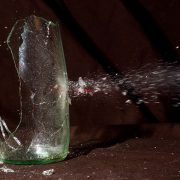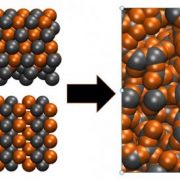MIT researchers demo 3-D glass printing

Photo credit: Steven Keating, MIT
3-D printing has risen to the forefront of prototyping and rapid manufacturing, but glass hasn’t worked out very well as a printing medium. Some systems can use powdered glass with certain 3-D printing techniques, but the finished product isn’t transparent like glass. Researchers at MIT have changed that, however, by demonstrating a new 3-D printing technique that uses molten glass to “print” a 3-dimensional object, layer by layer.
Glass printing could have architectural applications
The molten glass must leave the printing nozzle at a temperature that exceeds 1,000° C. To make sure the glass remains hot enough to work, the researchers developed a printer with multi-stage heating coils that keep the glass properly heated at each point of the production process. Once the glass has exited the printing nozzle, the object is built in a heated chamber that maintains a temperature just above the point where glass solidifies. By keeping the glass heated after printing, the researchers can control the cooling process, which allows the printed piece to cool gradually without breaking.
The printing nozzle is made from aluminum oxide. It can withstand the high temperatures and discourage the molten glass from sticking to it during production. Currently the researchers are working with soda-lime glass formulations, but in theory, the process could also be used to create tempered glass items. For a tempered printing process to be successful, the printer would have to be able to work with glass heated to a much higher temperature.
The process could also be used to create architectural glass with specific properties, like light transmission. Traditional float glass has smooth interior features, which allow light and solar radiation to be transmitted easily. A 3-D printed piece of glass could have internal features that control the transmission and distribution of light more effectively.
Don’t expect 3-D glass printing to move to the production stage anytime soon, though. According to MIT researchers, they want to work with different production techniques, including the addition of pressure to the molten glass stream to better control the flow, and give more precision to the resulting printed glass object.
At Glassprimer™, we don’t print glass, but we do provide the perfect coating for glass. If you’d like more information about decorating with glass paint, please check out the rest of our site. If you’d like to purchase Glassprimer™ glass paint, please visit our online store .





